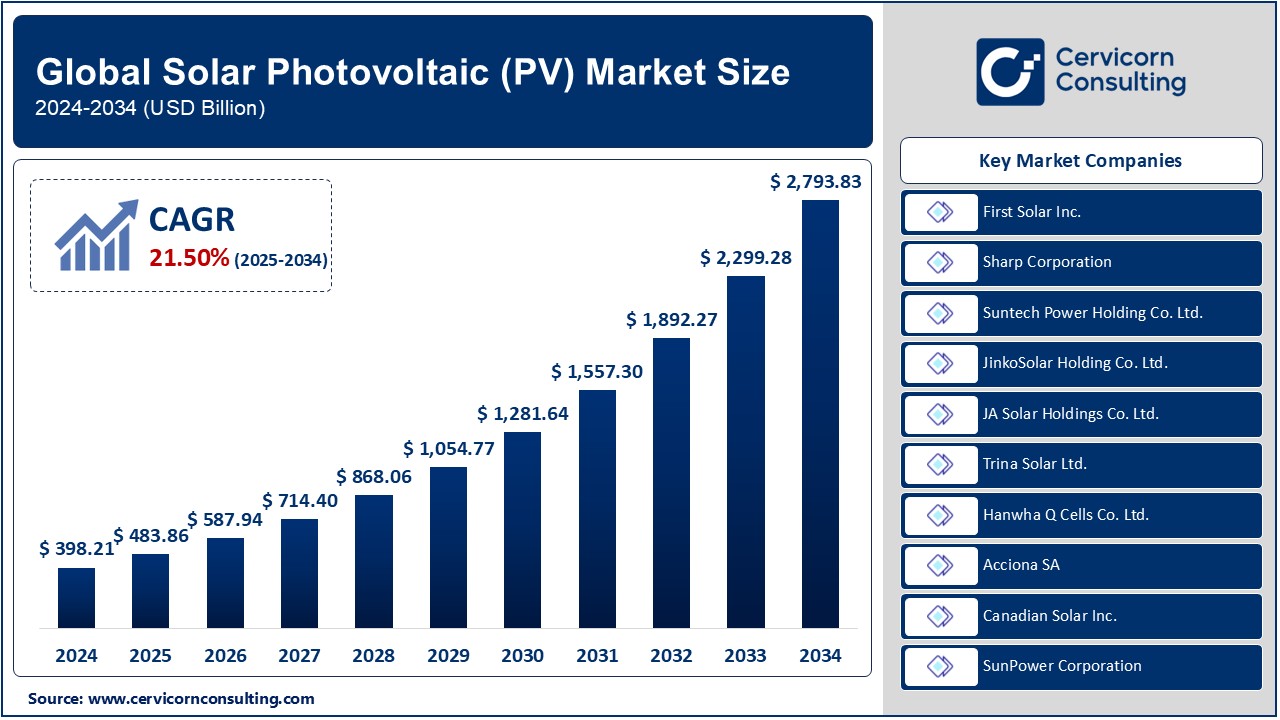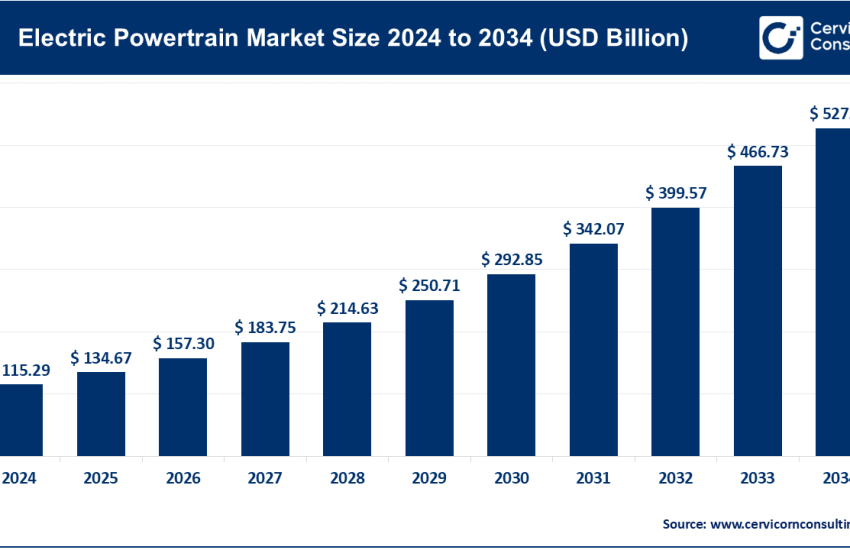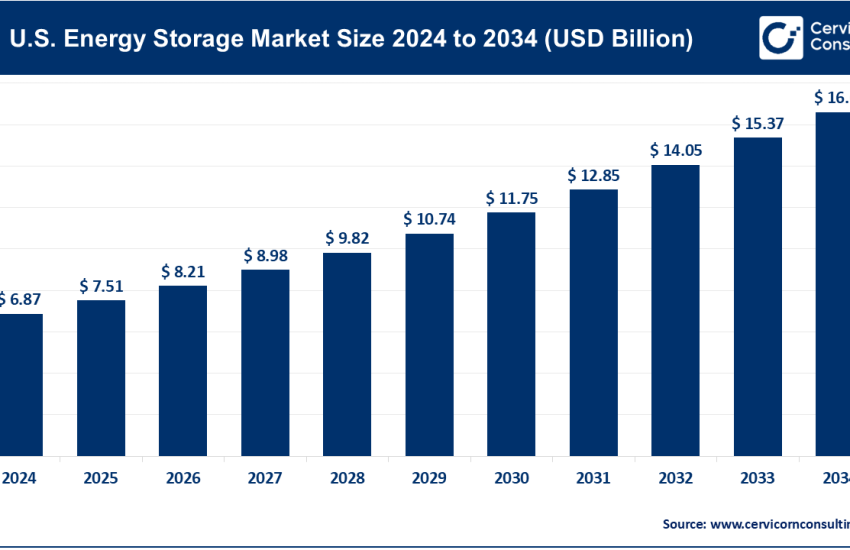Solar Photovoltaic (PV) Market Size, Share, and Forecast 2034
Solar Photovoltaic (PV) Market Overview
The global solar photovoltaic (PV) market was worth USD 398.21 billion in 2024 and is anticipated to expand to around USD 2,793.83 billion by 2034, registering a compound annual growth rate (CAGR) of 21.50% from 2025 to 2034.
The solar photovoltaic (PV) market is a rapidly growing sector within the renewable energy industry, driven by the global push for sustainable energy solutions and the urgent need to mitigate climate change. Solar PV technology converts sunlight directly into electricity using semiconductor materials, predominantly silicon-based solar cells. This market encompasses a wide range of products and services, including solar panels, inverters, mounting systems, and related installation and maintenance services. The market is segmented by technology (monocrystalline, polycrystalline, thin-film), application (residential, commercial, utility-scale), and geography (North America, Europe, Asia-Pacific, Latin America, Middle East, and Africa).
Importance of the Solar Photovoltaic (PV) Market
The solar PV market is vital for global energy transition efforts as it offers a clean, sustainable, and scalable energy solution to meet rising electricity demands. It reduces reliance on fossil fuels, thereby lowering greenhouse gas emissions and mitigating the impacts of climate change. Solar energy also promotes energy security and economic development by creating jobs in manufacturing, installation, and maintenance. Moreover, solar PV systems can provide electricity in remote and off-grid areas, fostering social and economic development in underserved regions.
Get a Free Sample: https://www.cervicornconsulting.com/sample/2493
Solar Photovoltaic (PV) Market Top Companies
1. First Solar Inc.
- Specialization: Thin-film photovoltaic modules
- Key Focus Areas: Utility-scale solar projects, advanced module technology, sustainability
- Notable Features: Cadmium telluride (CdTe) technology, high energy yield in hot climates
- 2023 Revenue (approx.): $3.5 billion
- Market Share (approx.): 5%
- Global Presence: North America, Europe, Asia-Pacific, Middle East
2. Sharp Corporation
- Specialization: Crystalline silicon and thin-film solar panels
- Key Focus Areas: Residential, commercial, and industrial solar solutions
- Notable Features: High-efficiency solar modules, smart energy solutions
- 2023 Revenue (approx.): $2.8 billion
- Market Share (approx.): 4%
- Global Presence: Asia-Pacific, Europe, North America
3. Suntech Power Holding Co. Ltd.
- Specialization: Polycrystalline and monocrystalline solar modules
- Key Focus Areas: Residential, commercial, and utility-scale projects
- Notable Features: High-performance solar panels, durability
- 2023 Revenue (approx.): $2.1 billion
- Market Share (approx.): 3.5%
- Global Presence: Asia-Pacific, Europe, North America, Middle East
4. JinkoSolar Holding Co. Ltd.
- Specialization: Monocrystalline and polycrystalline solar modules
- Key Focus Areas: R&D, smart solar solutions, energy storage integration
- Notable Features: High-efficiency solar cells, vertically integrated supply chain
- 2023 Revenue (approx.): $12.5 billion
- Market Share (approx.): 10%
- Global Presence: Asia-Pacific, Europe, North America, Latin America
5. JA Solar Holdings Co. Ltd.
- Specialization: High-performance solar PV products
- Key Focus Areas: Residential, commercial, and utility-scale markets
- Notable Features: PERC technology, bifacial solar modules
- 2023 Revenue (approx.): $10.3 billion
- Market Share (approx.): 8.5%
- Global Presence: Asia-Pacific, Europe, North America, Middle East
Leading Trends and Their Impact
- Technological Advancements: Innovations like bifacial solar panels, perovskite solar cells, and floating solar farms are increasing efficiency and expanding application areas.
- Energy Storage Integration: Combining solar PV with battery storage enhances energy reliability and grid stability.
- Decentralized Energy Systems: Growth in rooftop solar and microgrids empowers consumers and reduces transmission losses.
- Digitalization: Use of AI and IoT for predictive maintenance and performance optimization is improving operational efficiency.
- Sustainable Manufacturing: Eco-friendly production methods and recycling programs are gaining prominence to reduce the carbon footprint.
Successful Examples Worldwide
- China: The Tengger Desert Solar Park, one of the largest solar farms globally, contributes significantly to China’s renewable energy goals.
- India: The Bhadla Solar Park in Rajasthan is a leading example of large-scale solar deployment in emerging economies.
- United States: California’s aggressive solar adoption, including Tesla’s Solar Roof, showcases the integration of solar technology in residential sectors.
- Germany: The Energiewende policy has positioned Germany as a leader in renewable energy adoption, with significant solar PV installations.
- Australia: High rooftop solar penetration in residential sectors demonstrates successful decentralized solar energy deployment.
Regional Analysis: Government Initiatives and Policies
North America
Government incentives like the Investment Tax Credit (ITC) in the U.S. and net metering policies have driven solar PV adoption. Canada also supports renewable energy through grants and feed-in tariffs.
Europe
The European Green Deal and country-specific targets have accelerated solar PV installations. Germany, Spain, and the Netherlands lead in solar capacity expansion.
Asia-Pacific
China’s subsidies and renewable targets, India’s solar auctions, and Japan’s feed-in tariffs have fueled market growth. Southeast Asia is also emerging with government-backed solar initiatives.
Latin America
Brazil and Chile offer favorable auction mechanisms and net metering, driving utility-scale and distributed solar growth.
Middle East and Africa
Countries like the UAE and Saudi Arabia are investing heavily in solar projects as part of their economic diversification strategies. South Africa’s Renewable Energy Independent Power Producer Procurement Programme (REIPPPP) has also stimulated solar investments.
The global solar PV market continues to evolve with technological advancements, supportive policies, and growing investments, positioning it as a cornerstone of sustainable energy futures.
To Get Detailed Overview, Contact Us: https://www.cervicornconsulting.com/contact-us
Read Report: Solar Cell Market Key Trends, Growth Drivers, and Top Players Shaping the Future of Renewable Energy



